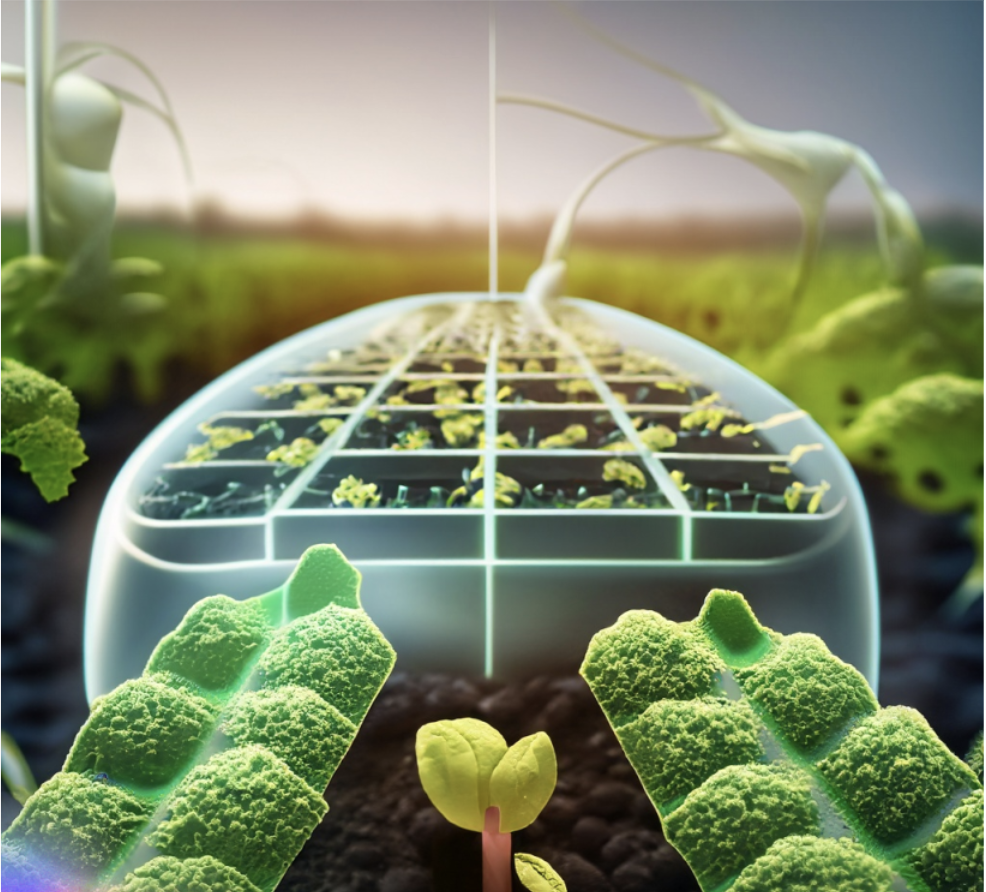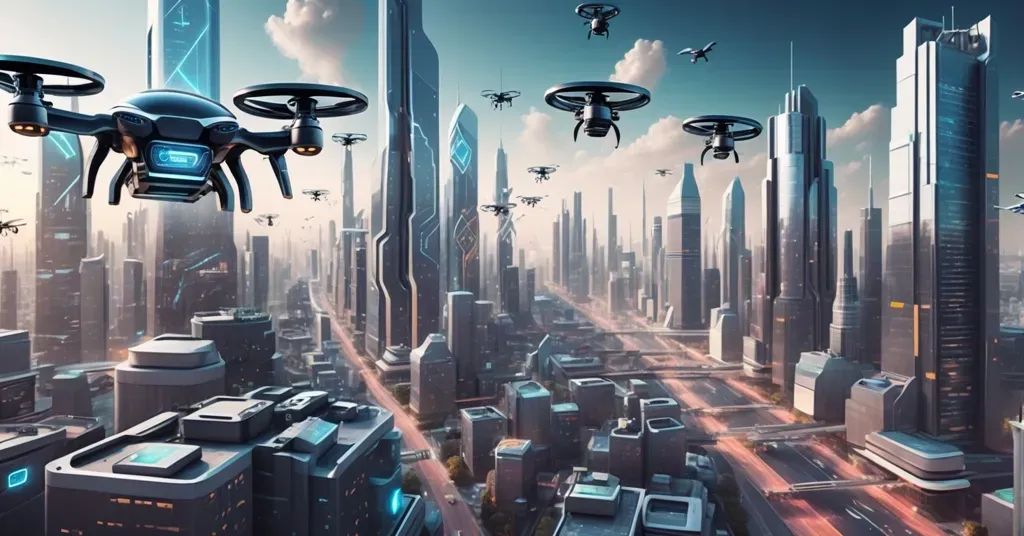
Exponential Impact Of Artificial Photosynthesis & AI Technologies on the Food and Agriculture Industry
Artificial photosynthesis holds the key to a sustainable, green revolution in agriculture and food production, offering solutions to climate change, clean energy production, and increased crop yields, making it a must-read for anyone interested in shaping a better future.
Artificial photosynthesis technology has a remarkable potential of disruption for future food and agriculture industry. Understanding the benefits and challenges of harnessing this innovative technology takes a scientific, futuristic, and analytic approach. The article aims to offer insights into the transformative capabilities of artificial photosynthesis in revolutionizing food production, improving crop yields, and mitigating the environmental impact of modern agriculture.
Artificial photosynthesis is an emerging field of research that aims to replicate the process of natural photosynthesis, harnessing sunlight to convert carbon dioxide (CO2) and water (H2O) into renewable fuels and valuable chemicals. This scientific article explores the potential social and industrial impact that artificial photosynthesis may have in the future. While artificial photosynthesis is still in its infancy, it holds great promise for addressing environmental challenges and revolutionizing various sectors.
Artificial photosynthesis is an emerging field in agritech development with great potential for revolutionizing farming practices and addressing food security challenges. By mimicking the natural process of photosynthesis in plants, scientists are working towards developing technology that can harness sunlight, carbon dioxide, and water to produce valuable chemical compounds.
One crucial aspect of future agritech development through artificial photosynthesis is the production of clean and sustainable energy sources. Researchers are exploring using artificial photosynthesis to create renewable fuels, such as hydrogen, which can be used to power machinery and farm equipment. This could reduce the dependence on fossil fuels and mitigate the environmental impact of traditional farming practices.
The global food and agriculture industry faces unprecedented challenges due to increasing population growth, limited arable land, and climate change. In order to meet the increasing demand for food sustainably, innovative technologies are required. Artificial photosynthesis, an emerging field, holds immense potential to revolutionize food production and address the shortcomings of conventional agriculture. This article examines the future impact of artificial photosynthesis on the food and agriculture industry, shedding light on the transformative capabilities of this technology.
Additionally, artificial photosynthesis can increase crop yields and improve nutrient efficiency significantly. Crops could benefit from enhanced photosynthesis and growth by optimizing the conversion of sunlight into chemical energy. This could lead to higher agricultural productivity and ultimately contribute to global food security. A paradigm shift towards sustainable and efficient food production could be achieved by integrating artificial photosynthesis into the food and agriculture industry. The transformative potential of this technology lies in its ability to enhance crop yields, mitigate climate change by capturing and utilizing carbon dioxide, produce sustainable energy, and minimize environmental and social impacts. However, scalability, cost-effectiveness, and public acceptance must be addressed for widespread adoption.
Moreover, artificial photosynthesis offers a promising solution for reducing greenhouse gas emissions in agriculture. This technology could mitigate climate change and contribute to sustainable farming practices by capturing and utilizing carbon dioxide from the atmosphere. It could assist in implementing carbon-neutral or even carbon-negative farming systems.
There are key areas in which Artificial Photosynthesis will impact the future. They are as follows :
Environmental Benefits
Artificial photosynthesis offers a sustainable solution for mitigating climate change by reducing CO2 emissions. As a carbon-neutral process, it directly captures CO2 from the atmosphere, thus contributing to the stabilization of greenhouse gas concentrations. This technology can help alleviate the harmful effects of global warming, ensuring a cleaner and greener future.
2. Energy Production and Storage
By utilizing artificial photosynthesis, abundant sunlight can be harnessed to generate renewable energy, surpassing the limitations of conventional solar panels. This technology has the potential to produce hydrogen fuel, a clean and efficient energy carrier, as well as other forms of renewable fuels such as methane and methanol. Furthermore, artificial photosynthesis provides an avenue for efficient energy storage through the production of chemical fuels, enabling continuous power supply even during periods of low sunlight.
3. Sustainable Industrial Processes
Artificial photosynthesis can transform the industrial sector by providing a sustainable pathway for chemical production. Generating valuable chemicals and feedstocks from CO2 and water offers an alternative to fossil-fuel-based manufacturing processes. This shift towards green chemistry reduces reliance on non-renewable resources, minimizing waste generation and contributing to a more sustainable and circular economy.
4. Agricultural Advancements
By incorporating artificial photosynthesis into agricultural practices, it is possible to enhance crop yields and promote food security. Light reduction during photosynthesis is a common issue, but with artificial photosynthesis, crops can be genetically modified to incorporate artificial photovoltaic components, resulting in improved photosynthetic efficiency. This innovation could contribute to addressing the increasing global food demand, particularly in regions with limited arable land.
5. Socioeconomic Implications
Deploying artificial photosynthesis in various sectors can lead to considerable socioeconomic benefits. Job creation opportunities arise from developing, manufacturing, and maintaining artificial photosynthesis devices and systems. Access to affordable and clean energy sources can promote social equity and empower underserved communities by reducing their dependence on traditional energy sources.
Furthermore, the development of artificial photosynthesis technologies has opened up opportunities for producing valuable, high-demand compounds through sustainable means. For example, the synthesis of complex molecules like pharmaceuticals, biomaterials, and specialty chemicals can be achieved using artificial photosynthesis. This could offer economic benefits and reduce environmental harm associated with traditional synthesis methods.
Conclusion
In the future, as civilization grows, food scarcity will be a significant issue due to environmental and Global warming with other factors.
The future of agritech development through artificial photosynthesis holds tremendous potential in clean energy production, increased crop yields, reduced greenhouse gas emissions, and sustainable production of valuable compounds. Continued research and technological advancements in this field can pave the way for a more efficient, sustainable, and environmentally friendly agricultural sector.
The social and industrial impact of artificial photosynthesis in the future is immense. By harnessing the power of sunlight, this technology can address pressing environmental concerns, revolutionize the energy sector, promote sustainable industrial processes, and advance agricultural practices. Furthermore, the adoption of artificial photosynthesis has the potential to create a more equitable and sustainable society. Further research and development in this field are crucial to unlock the full potential of artificial photosynthesis, bringing us closer to a carbon-free future.
The future impact of artificial photosynthesis on the food and agriculture industry appears promising, revolutionizing how we produce food sustainably. By harnessing the power of this technology, we can overcome the challenges faced by conventional agriculture and ensure a resilient, efficient, and environmentally friendly food production system. Continued research and innovation in artificial photosynthesis are necessary to maximize its potential and drive the transformation toward a sustainable future.
#Artificial #photosynthesis # food #production #agriculture # transformative #technology #sustainability #science #nft #metaverse #futurism #disruption #socialdevelopment #impact #research #innovation
A version of this article by this author was also featured on these sites.

Transform your organization for a better future with ExO Solutions.
With a highly-tuned methodology, we can help large organizations grow, based on an in-depth study of what powers exponentially growing companies.
Did you know that $3.5 trillion has been wasted on failed corporate innovation in the past decade? Our approach is proven to help you copy the successes of Big Tech and lead your company into an exciting future.
Join our community and explore our training and certification programs, ExO Sprint, ExO Speaker, ExO Swarm, Advisory Calls, and Workshops.
Learn more: https://openexo.com/

ExO Insight Newsletter
Join the newsletter to receive the latest updates in your inbox.










